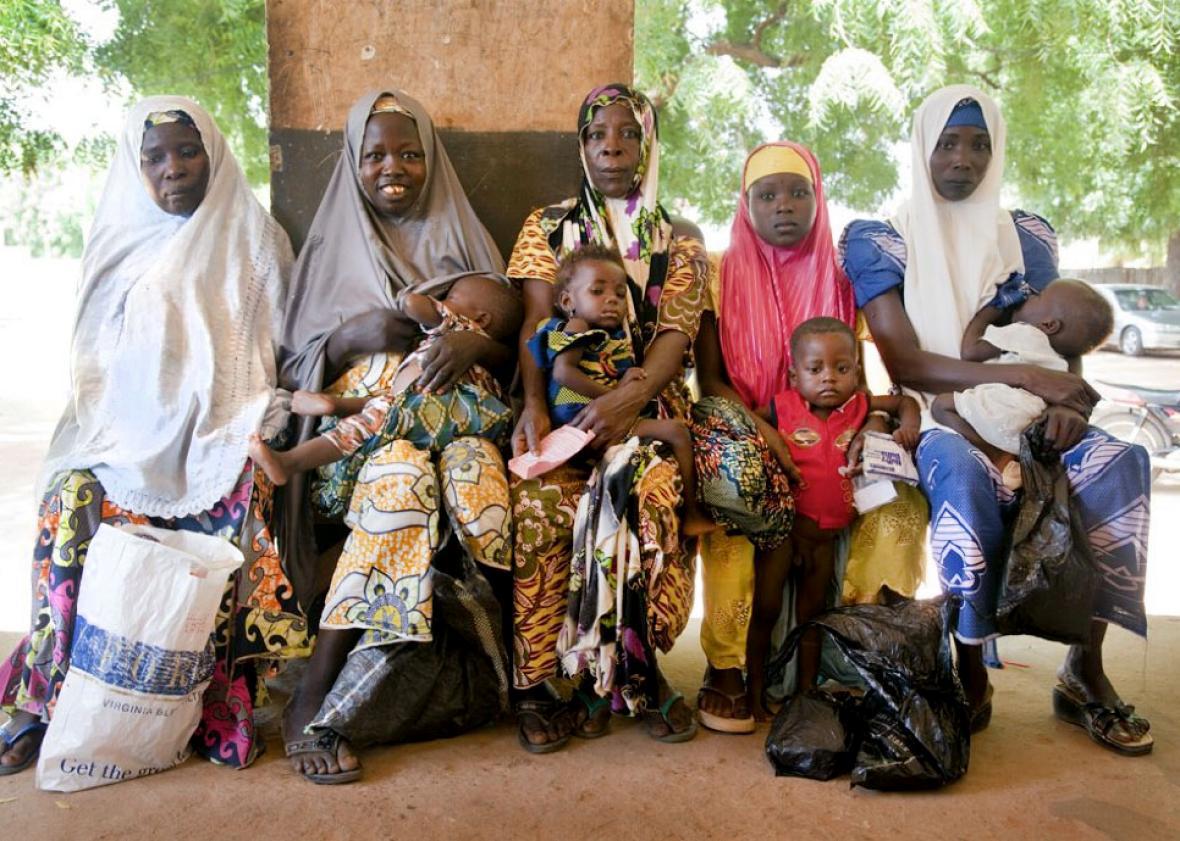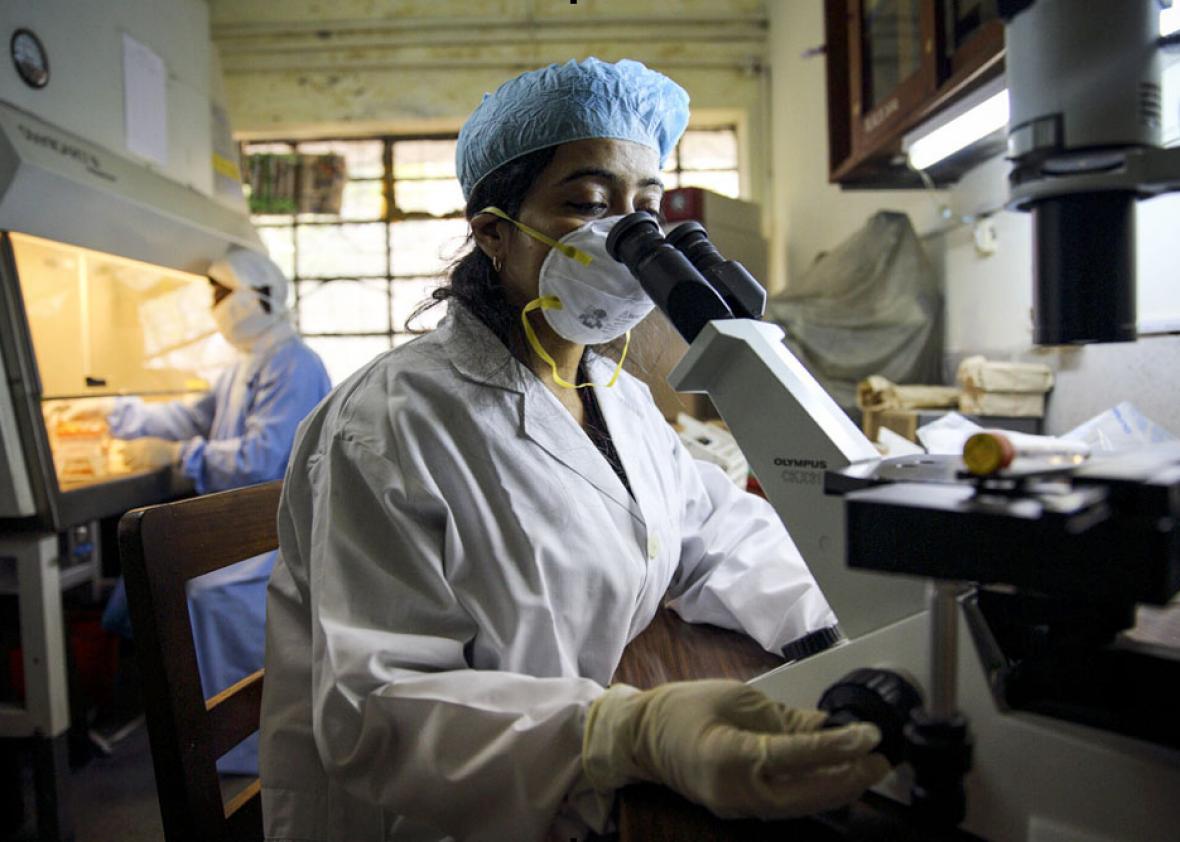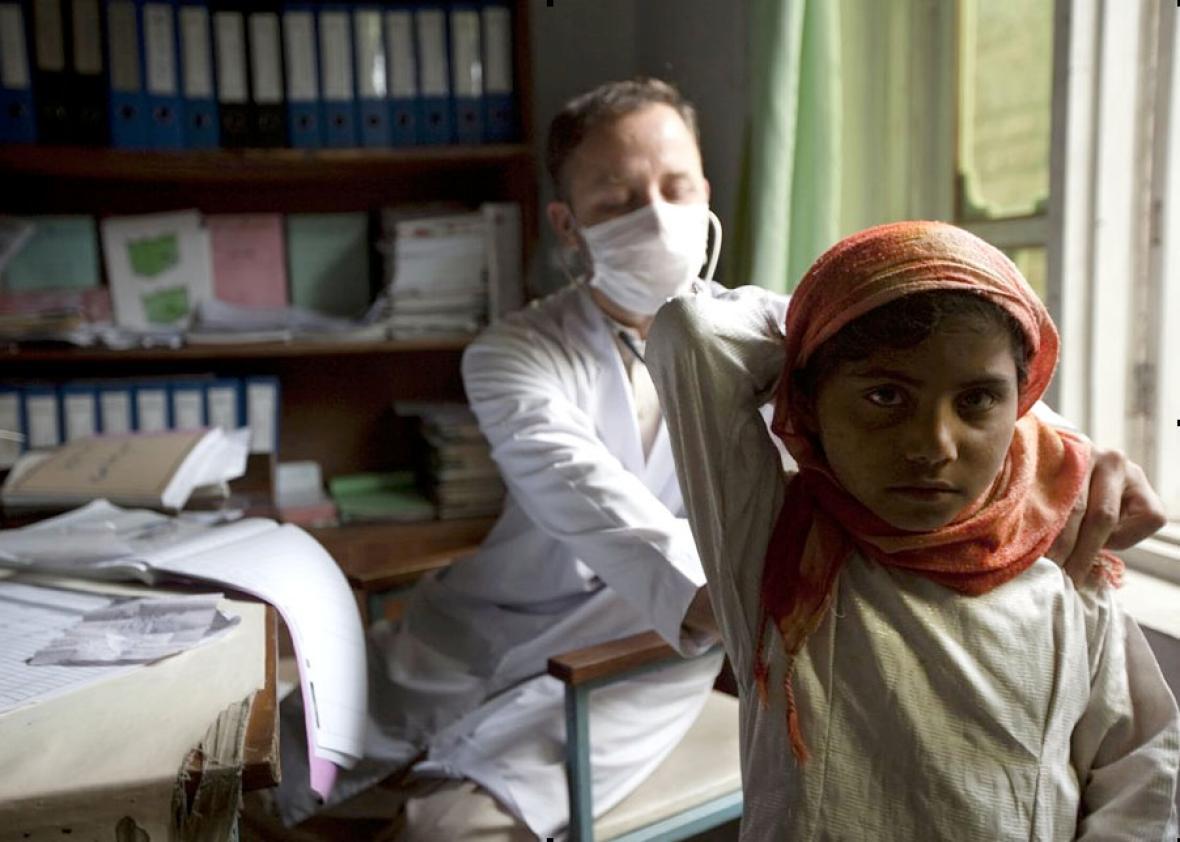This week, for the first time, Africa marks one year without a new case of polio.
Polio is a horrible disease that paralyzes and kills children. It was wiped out years ago in most countries and is tantalizingly close to being wiped off the face of the planet. As of last year, only Afghanistan, Pakistan, and Nigeria had yet to drive polio out of their countries. Nigeria recently hit the one-year mark with no new cases reported.
To be officially certified polio-free, countries must go three years without a single child being paralyzed by the virus.

Photo by the Bill and Melinda Gates Foundation
This progress in Africa gives us a reason to be optimistic, but not complacent. Wiping out a disease like polio is an incredibly complex endeavor. One key tool is an intervention that can stop the virus in its tracks. The polio vaccine does this by not only protecting children from disease but also by preventing children from spreading polio to others. Polio vaccine drives have helped reduce the global number of new polio cases from 350,000 in 1988 to just 36 so far in 2015.
Another—arguably more difficult—piece of wiping out a disease is surveillance: the coordinated global search for every last case and any trace of the virus.
How does one go about finding the polio virus across the expanse of an entire country or continent? There are now far fewer polio virus needles in the global haystack, which is fantastic news. But the remaining ones become even more difficult to find. We can’t stamp out a disease if we don’t know where it is. But with polio we do know where it is—and we know thanks to poop.
When children get polio, the virus grows in their intestines and is excreted in the stool, and from there it spreads to other children. That’s why it has been so tough to beat polio in areas with poor sanitation. Stool is also how we track the virus. The global polio program has an extensive network dedicated to collecting and testing stool samples, both from children showing signs of paralysis and from sewage.

Photo by Gavi/Bill and Melinda Gates Foundation
The best way to find the virus is to test stool samples of children who have suddenly become paralyzed. To confirm whether the paralysis is caused by polio, two samples from the sick child are taken within 14 days of the onset of symptoms, refrigerated, and transported to a laboratory for testing. We’ve seen that if a child is showing signs of paralysis, a parent will nearly always bring that child to someone to find help, no matter how remote or insecure the conditions. That someone could be a religious leader, a traditional healer, or a medical professional; public health officials in each country partner with these groups to improve polio surveillance.
About 100,000 cases are investigated each year through this method of spotting and reporting polio-like symptoms. Who actually does this detective work differs from country to country, but when possible it’s led by local health officials. In each case, the child is identified and visited, a set of stool samples is collected and sent off for analysis, and the result is reported to the World Health Organization. By looking at the data, we can tell if we’re on track: Paralysis symptoms occur in about 2 of every 100,000 children under 15 in a general population. If we’re reviewing samples at this rate, we know the system is working.
But polio can still lurk in a population undetected, at least for a while, even in areas where paralysis surveillance is working. That’s why we also use environmental surveillance to monitor for polio. It is estimated that only 1 in 200 people infected with polio exhibit symptoms, so it’s possible for the other 199 people to be spreading the virus into their environment through stool. We would never know they were doing it, because they weren’t sick. Environmental surveillance involves testing sewage systems and other environmental samples. In other words, analyzing a lot of poop. By doing so, we can detect polio even if the carriers themselves are undetectable.
It amounts to trying to find even fewer needles in an even bigger haystack, but environmental surveillance has proven tremendously valuable. In 2014, polio was found in the sewage system in Brazil during the World Cup. In 2013, this practice helped Israel’s surveillance system locate polio circulating in the country’s sewage for the first time in more than a decade. If undetected, small blips like these can lead to outbreaks. When we’re able to spot them in advance, health workers have the chance to respond quickly with immunization campaigns.
The last case of polio in India was reported in 2011, an achievement once thought impossible. The country once suffered from more polio cases than anywhere else in the world, and the combination of dense populations, poor sanitation, and weak routine immunization programs led experts to suggest it would be the last place on Earth to drive out polio. Today, India’s polio story is one of historic success.

Photo by the Bill and Melinda Gates Foundation
I worked in India for several years with the national polio surveillance group, which included more than 250 offices spread over every state in the country. Finding and evaluating paralyzed children was a major part of their job, and it provided a frequent reminder of the importance of eradicating this virus.
I will never forget the feeling of helplessness when a mother brought her daughter to us after a polio diagnosis, and asked us to help fix her. There was nothing any doctor could do at that point; polio paralysis is permanent, and it was too late for her child. It drove home the urgency of our task. We could have prevented her daughter’s suffering if we had been able to stop the virus in India more quickly.
I’ve seen this heart-breaking scene too many times during my years as an epidemiologist. It’s been even worse to see countries drive out polio, only to become re-infected by other countries that still had the virus circulating. Countless parents who thought their children were safe had to worry about polio again.
As long as this virus still exists somewhere, it can show up anywhere. Which is why fully wiping it out—and doing the necessary surveillance work to accomplish and confirm it—is so important.
The work it requires isn’t glamorous, but the reward will be worth it.
